Moeller PKZ2 Features |
PKZ2 Accessory Diagram |
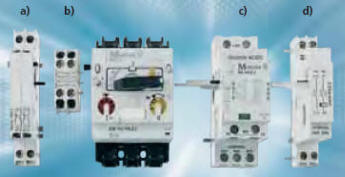
| a) |
Standard auxiliary contact module |
| b) |
Trip indicating auxiliary contact module |
| c) |
Remote operator |
| d) |
Voltage Releases
- Shunt Release
- Undervoltage Release with/without early-make
auxiliary contact
- Delayed response under-voltage release |
|
PKZ2 Trip Blocks |

Plug in trip modules allow fast adaptation to engineering
changes. |
PKZ2 Switching and Signaling
(locally and remotely) |
The PKZ2 has intelligent accessories to
allow flexible solutions to a wide variety of communication
tasks. The electronic remote operator RS-PKZ2 can be
actuated directly, without any coupling elements, from the
semiconductor outputs of a PLC (24 V DC). With electrical
isolation between CONTROL and LINE, it can take the power
for the switching process from a separate power supply (e.g.
230 V 50 Hz). On the RE-PKZ2, the electronic remote operator
for standard applications, CONTROL and LINE are separate
inputs too, although they use the same potential reference.
This allows actuation by low consumption units, such as
control circuit devices. |
| The PKZ2 door coupling handle: Operation from the
outside |
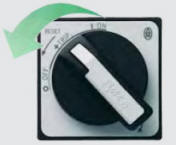
|
Like the basic unit, the door coupling handle has ON,
OFF and TRIPPED positions. When installed in the control
panel door, the handle enables the to be interlocked, if
required.
|
| PKZ2 Motor-starter with or without manual reset – many
advantages rather than many parts |
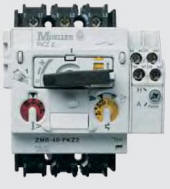
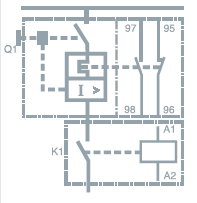 |
Valuable not just in the chemical
industry: the trip block ZMRPKZ2.
When used in combination with the
PKZ2 basic unit, the trip block with
overload relay function switches Off
the down-stream contactor, rather than
disconnecting the circuit-breaker in the
event of a motor overload. The circuit breaker PKZ2 thus
remains switched
On and does not need to be manually
reset locally. After a cooling-down phase for the trip
block ZMR, the contactor is reset automatically. In the
“Manual” setting, the ZMR block has to be reset by hand.
|
PKZ2 Circuit Diagrams |
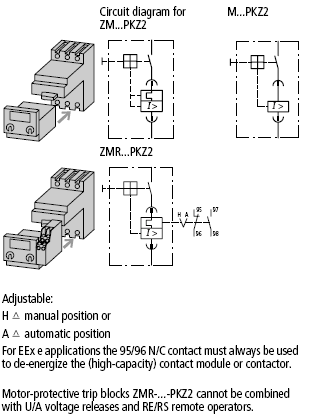 |
PKZ2 Overview |
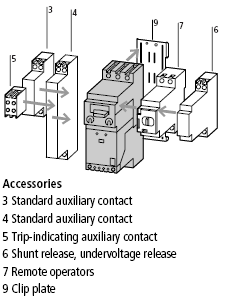 |
| |